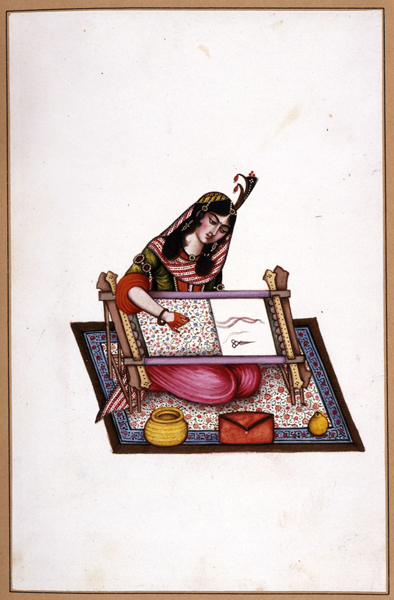Girls are often shown performing domestic tasks. Weaving, knitting, sewing, and other textile arts are usually the realm of the female, regardless of class. This girl from mid 19th century Persia, is shown in a less that comfortable position, kneeling on a rug by her cloth stretcher. She is surrounded by the tools of embroidery and her work is shown half completed.
The quality and creativity of her work will have a great impact on her social standing, both in the family and community. An enormous amount of pressure was put on young girls to be able to design and execute perfect patterns. Her worth is bound up in all that she can offer the household in terms of work and social presentation.
This girl wears a fairly elaborate veil for the task of embroidery, which presumably would be done alone or with other women. Her hands are stained with henna, an impermanent dye usually used on special occasions. Perhaps she is preparing a festival garment for an event of great importance to her or her family.
The presence of a pear would have specific connotations if this was a European work, but may just be her lunch. The wallet is not so obvious, unless possibly meaning that she is making this garment for another and being paid to do it.

